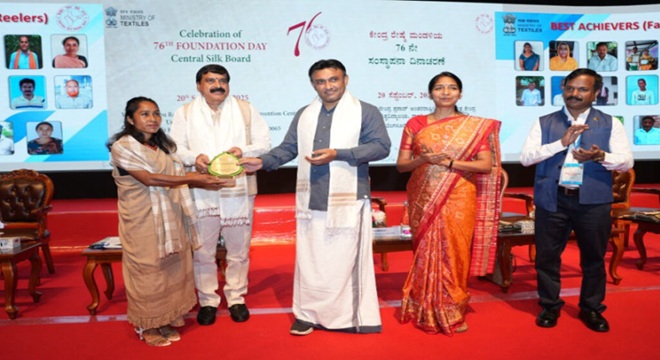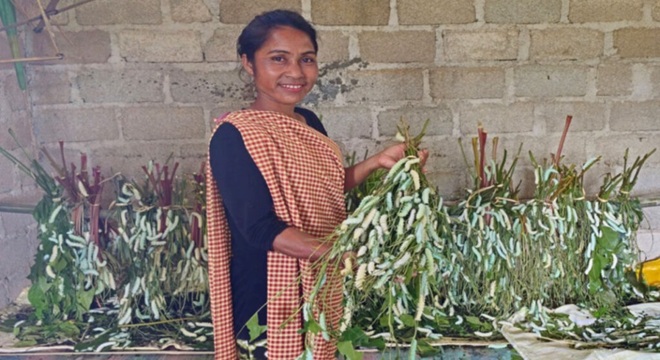
Meghalaya Woman Weaves Success Through Sericulture, Inspires Rural Empowerment
Smt. Taimong Mynsong from Ri-Bhoi district in Meghalaya
has emerged as a beacon of self-reliance through her remarkable journey in Eri
silk rearing and weaving. A single mother of five, she transformed her modest
livelihood into a sustainable enterprise through the Silk Samagra-2 scheme,
designed to strengthen India’s silk ecosystem from seed to fabric.
Mynsong manages 6 to 7 Eri silkworm rearings each year
and continues weaving throughout the seasons, generating an annual income of
nearly ₹1.8 lakh (about US$2,160). Her dedication to improving productivity and
craftsmanship earned her the Best Achiever Award at the Central Silk
Board Foundation Day 2025.
India ranks second globally in silk production,
contributing about 32% of the world’s output. Among its varieties, Eri silk
which also called “Ahimsa silk” is unique to the northeastern states and
represents nearly 8% of India’s total silk production. Under the Silk Samagra-2
initiative, launched by the Ministry of Textiles, over 60,000 women across
Assam, Meghalaya, and Nagaland have gained access to improved silkworm breeds,
weaving tools, and market linkages.
Mynsong’s success illustrates how women-led sericulture
is driving inclusive growth in India’s rural northeast. Her story underscores
how traditional knowledge, modern support systems, and determination can turn
village-based craftsmanship into a thriving livelihood while preserving India’s
rich silk heritage.

Mynsong manages 6 to 7 Eri silkworm rearings each year and continues weaving throughout the seasons, generating an annual income of nearly ₹1.8 lakh (about US$2,160). Her dedication to improving productivity and craftsmanship earned her the Best Achiever Award at the Central Silk Board Foundation Day 2025.
If you wish to Subscribe to Textile Excellence Print Edition, kindly fill in the below form and we shall get back to you with details.








